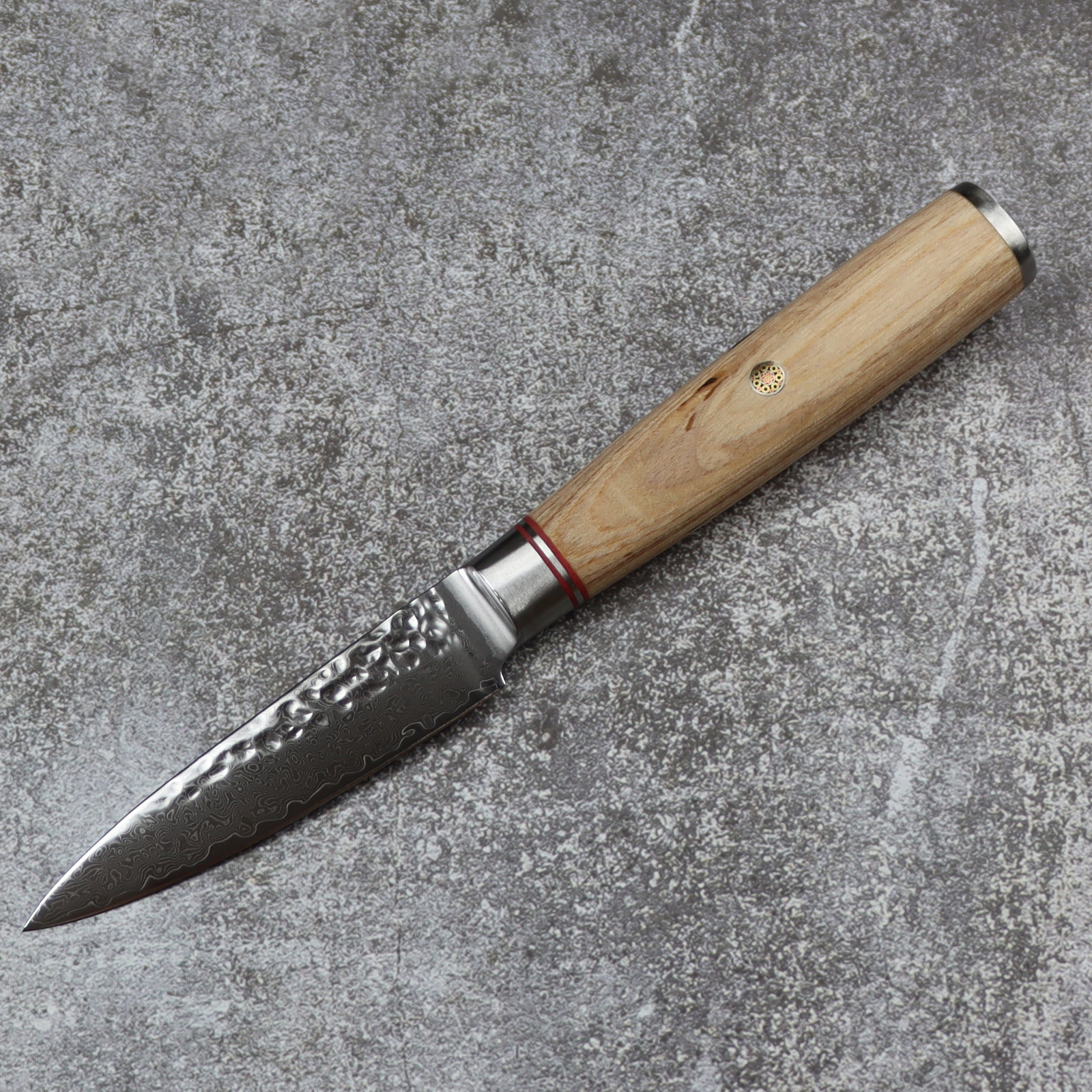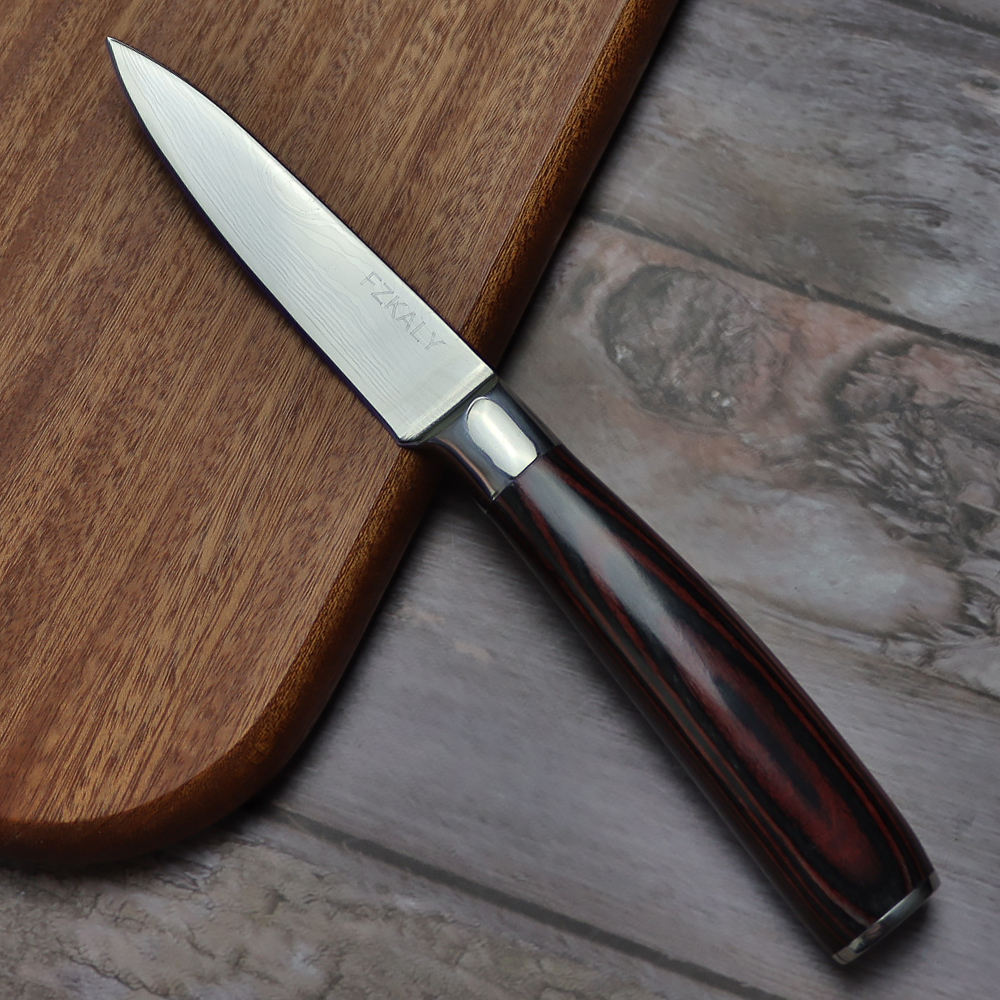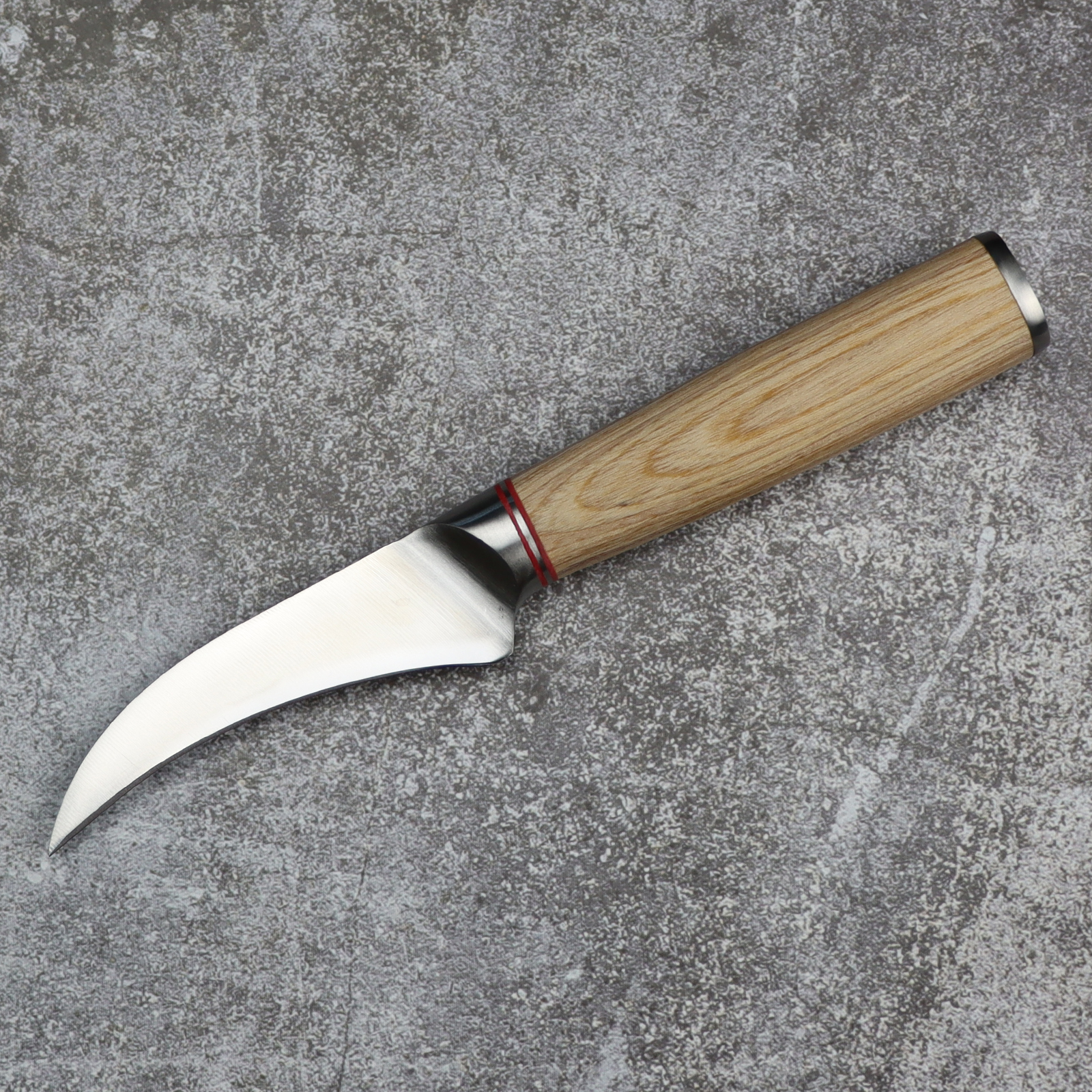How to Cut Dragon Fruit
Feb 27,2023 | Fzkaly
Unlock the delicious potential of dragon fruit with our easy guide to cutting and preparing this exotic fruit. Are you unsure of where to start when it comes to cutting dragon fruit, or intimidated by its spiky exterior and slimy flesh? Look no further! Our step-by-step instructions and helpful tips will give you the confidence to slice, dice, and enjoy this vibrant fruit like a pro. Whether you're a seasoned dragon fruit lover or trying it for the first time, our article will help you overcome any obstacles and discover the sweet, juicy flavors within. Say goodbye to fruit-cutting frustrations and hello to a new favorite snack – let's get started!
Well, let’s get to know more about dragon fruit first.
What is Dragon Fruit?

Dragon fruit, also known as pitaya, is a tropical fruit that grows on several species of cactus native to Central and South America. The fruit is in season from late spring to early fall in tropical regions, but it is often available year-round in supermarkets and specialty stores around the world. The fruit is known for its unique appearance, which typically features a bright pink or yellow exterior with spiky protrusions. The flesh of the fruit is usually white or pink with small, crunchy seeds throughout. Dragon fruit has a mild, sweet flavor that has been compared to a cross between a kiwi and a pear.
Why You Should Try Dragon Fruit?
Dragon fruit is a nutrient-packed superfruit that is loaded with health benefits. Here's a breakdown of its nutritional value:
- Fiber: Dragon fruit is a good source of dietary fiber, with 7 grams of fiber per cup. Fiber is important for maintaining a healthy heart and digestive system.
- Magnesium: Dragon fruit contains 18% of your daily recommended intake of magnesium in just one cup. Magnesium is essential for maintaining healthy blood pressure and helping muscles contract and relax.
- Iron: Dragon fruit is a terrific source of iron, with 8% of your daily recommended intake in one cup. This nutrient is necessary for the production of hemoglobin, which helps transport oxygen around your body.
- Vitamin C: Dragon fruit is rich in vitamin C, a powerful antioxidant that protects your cells from damage caused by harmful molecules called free radicals. Vitamin C also supports immune system function.
- Antioxidants: Dragon fruit contains a range of antioxidants, including flavonoids like phenolic acid and betacyanin, which protect your cells from free radicals and reduce inflammation.
- Protein: Dragon fruit contains almost 3 grams of protein per cup, making it one of the few fruits that are a good source of this nutrient.
- Omega-3 and Omega-6 fatty acids: Dragon fruit is also a good source of these healthy fats, which are great for brain health.
In addition to these key nutrients, dragon fruit also contains calcium, vitamin A, and prebiotics that support gut health and digestive function. So if you're looking for a low-calorie, nutrient-dense snack, dragon fruit is an excellent choice. Its health benefits make it a great addition to your diet, and its delicious taste makes it a perfect addition to your meals and snacks.
Now that the nutritional value of dragon fruit is so high, let's see how to cut it and enjoy it.
How to Cut Dragon Fruit
The 3 Most Common and Easiest Methods to Cut Dragon Fruit
1. Scoop it
To cut a dragon fruit, place it on a cutting board and slice it in half lengthwise.

Next, scoop out the inside using a large spoon and press down the inside edge into the flesh. You can also use a Fruit Ball Spoon to get round-shaped flesh.

2. Cut into wedges
Slice the fruit in half and lay each half of the fruit flat on the cutting board and cut it into wedges, like you would cut a watermelon, then, you can serve and enjoy it.

3. Get whole flesh
Use a sharp knife to cut off the top and bottom ends of the fruit, then vertically make a cut on the outside of the skin, and then peel the cut skin to both sides to extract the whole piece of flesh. After removing the flesh from the skin of the dragon fruit, you can cut it into any shape or size you desire. You can cut the fruit into wedges, slices, or bite-sized cubes, depending on your preference, to garnish for drinks or decorate your snack.

Some Creative Methods to Cut Dragon Fruit
1. Flower-shaped cuts
Cut off the top and bottom first, after cutting off the ends, make a V-shaped cut around the middle of the dragon fruit, ensuring to cut into the center of the fruit. If you are unsure about cutting evenly, you can use a knife to draw the V-shape on the surface first. Then, break the dragon fruit apart and peel off the skin. Each section will now be beautifully exposed, making it perfect for impressing your guests.

2. Grid-like shaped cuts
We cut the dragon fruit in half and take one half, cut the flesh into a grid-like(square) shape. Then, slide a knife along the fruit skin and gently press the bottom a few times. Finally, insert a fork and it is ready to be eaten by hand.

3. Cross-stack shaped cuts
After removing the ends, we cut the dragon fruit into four equal sections. Then, we take one half and separate the fruit flesh from the skin. After that, we cut the fruit flesh into small pieces and cross-stack them evenly. Finally, we insert a fork and it is ready to be served. This delicate and attractive presentation is perfect for entertaining guests.

What Tools Can I Use to Cut Dragon Fruit?
We recommend cutting dragon fruit with a fruit knife, which is convenient. Here are some paring knives to choose from if you need them.
1. 3.5 Inch Japanese Paring Knife
The Fzkaly 3.5-inch Japanese paring knife is fabricated from top quality vg10 Damascus steel, boasting a single-piece construction that provides excellent durability. Hammered by vacuum heat treatment and gone through the fold and forge process, this paring knife is incredibly razor-sharp. The full tang design offers perfect balance while the ergonomic handles promote fatigue-free cutting.
You can use it for most of kitchen cutting tasks, from peeling and slicing fruit, to mincing herbs, to creating decorative garnishes.
Price: $75
2. 3.5 Inch Wood Handle Paring Knife
The paring knife with 3.5-inch razor-sharp blade offers minimal hand movement as it slides smoothly like butter. Perfect size and comfortable wood handle fits your hand well.
The blade is made of high-quality 67-layer vg10 high carbon steel, going through Vacuum heat treatment makes prep work a breeze without destroying the structure of the food itself to maximally preserve the nutrients of the food. In addition, exquisite hammered dimples on the blade's surface, which can reduces drag and minimizes stuck on food.
This 3.5-inch Damascus paring knife also comes with a leather knife sheath for safe storage and transport, very suitable for outdoor camping.
Price: $59.99
3. 3.5 Inch German Paring Knife
The Fzkaly multifunction 3.5" paring knife is designed for chopping, slicing, dicing, and mincing fruit and vegetables. Liked by cooking lovers.
The blade of the paring knife is made of German X50Cr15Mov high carbon steel with high quality, the edge is hand sharpened to 16-18° per side ensuring supremely sharp out of the box. The handle is made from premium Pakka wood, with a comfortable, non-slip grip to provide unbeatable control. With an effortless paring knife, you won't feel tired after using it for a long time.
Price: $35
In addition to the above content, the following questions can also help you understand dragon fruit more fully.
What are the Types of Dragon Fruit?
There are several types of dragon fruit, depending on their appearance and flesh color. Here are some common varieties:
White Dragon Fruit: Also known as the white-fleshed dragon fruit, this type has a pink or yellow exterior and white flesh with small black seeds.
Red Dragon Fruit: Also known as the red-fleshed dragon fruit, this type has a pink or red exterior and red or pink flesh with small black seeds.
Yellow Dragon Fruit: Also known as the yellow dragon fruit or the golden pitahaya, this type has a bright yellow exterior and white flesh with small black seeds. It has a sweeter and more tropical flavor than other types of dragon fruit.
Hylocereus costaricensis: Also known as the Costa Rican pitahaya or the yellow dragon fruit, this type has a yellow or green exterior and white flesh with small black seeds. It is less sweet than other types of dragon fruit and has a milder, more melon-like flavor.
Hylocereus stenopterus: Also known as the Vietnamese dragon fruit or the yellow dragon fruit, this type has a yellow or green exterior and white flesh with small black seeds. It is similar in taste to the Hylocereus costaricensis.
Among them, red-fleshed dragon fruit and white-fleshed dragon fruit are the most common and can be found in most countries. The taste is slightly different, but they are all delicious. Other species are rarely seen.
How to Pick Up a Good Dragon Fruit?
First, look for a bright, evenly-colored exterior with no blemishes or bruises. Dragon fruit with an even and vibrant exterior is a good indication that it's ripe and healthy. Any blemishes, bruises, or uneven coloring may indicate that the fruit is damaged, overripe, or not yet ripe.
Second, check that the spines are firm and evenly spaced. The spines on a dragon fruit should be evenly spaced and firm. Avoid fruits with spines that are bent, damaged, or have fallen off, as this may indicate that the fruit is overripe or damaged.
Third, gently squeeze the fruit to ensure it's firm, but not too hard or mushy. Ripe dragon fruit should be firm to the touch, but not too hard or soft. If the fruit is too hard, it may not be ripe yet. If it's too soft, it may be overripe or damaged.
Then, check that the stem is dry and brown, not green or moist. The stem of the dragon fruit should be dry and brown, indicating that the fruit has been harvested and is mature. If the stem is green or moist, it may indicate that the fruit is not yet ripe or that it was harvested prematurely.
Finally, smell the fruit. Ripe dragon fruit should have a sweet, fragrant aroma. The aroma of the dragon fruit can also give you a clue as to whether the fruit is ripe or not. Ripe dragon fruit will have a sweet and pleasant aroma, while an unripe or overripe fruit may have little to no scent.
How to Know If a Dragon Fruit is Ripe?
To know if a dragon fruit is ripe, you can try these tips:
- Check the color: A ripe dragon fruit will have a bright, even color. The skin may be pink or yellow, depending on the variety. Avoid dragon fruits with brown or dry patches, as this could be a sign of over-ripeness.
- Gently squeeze the fruit: A ripe dragon fruit should be firm but slightly soft to the touch. If it's too hard or too soft, it may not be ripe yet.
- Smell the fruit: A ripe dragon fruit will have a sweet, fragrant aroma. If it has little to no aroma, it may not be fully ripe.
- Check the spines: The spines on the outside of the dragon fruit should be firm and evenly spaced. If they are bent or have fallen off, the fruit may be overripe.
By using these four tips, you can determine whether a dragon fruit is ripe and ready to eat.
When is Dragon Fruit in Season?
Dragon fruit is in season during the summer and early fall months in most growing regions. In the Northern Hemisphere, the season typically runs from June to November, while in the Southern Hemisphere, it's from December to May. However, the exact timing can vary depending on the region and climate.
What Does Dragon Fruit Taste Like?
Dragon fruit is a unique and eye-catching fruit that has a mild and slightly sweet taste. The flesh has a slightly crunchy texture, similar to that of watermelon or starfruit, but slightly softer. The flavor is often described as a cross between kiwifruit, pear, and sugar beets. White-fleshed varieties are mildly sweet, while the cultivars with red and pink flesh inside are sweeter. Some people may find the flavor of dragon fruit a little too mild or even bland. As a result, it is often combined with other fruits to create a larger fruit salad or platter.
How to Store Dragon Fruit?
Room temperature: Keep on the countertop for 2-3 days to ripen for immediate consumption.
Fridge: Store in an airtight container or sealable bag in the fridge for up to 1-2 weeks to slow the ripening process and prevent flavor absorption from other foods.
Freezer: Peel and cube, then freeze in a freezer-safe bag or container for up to 3 months for long-term storage. Frozen dragon fruit is best used in smoothies due to slight texture changes.
It's important to note that once cut, dragon fruit has a short shelf life and should be stored in an airtight container in the fridge and consumed within a few days.
How to Eat Dragon Fruit?
Dragon fruit is a versatile fruit that can be enjoyed in many ways. Here are some ideas to try:
- Just eat it directly when it is ripe.
- Add frozen dragon fruit cubes to smoothies or smoothie bowls.
- Make a refreshing Mexican-style agua de pitahaya with fresh dragon fruit, water, sweetener, and ice.
- Combine dragon fruit cubes with jalapeño, lime, onion, and sea salt for a spicy salsa.
- Mix dragon fruit cubes or balls with other fruits for a delicious fruit salad.
- Use dragon fruit as a garnish for yogurt bowls, oatmeal, overnight oats, or granola.
- Enjoy raw, ripe dragon fruit in frozen desserts, cocktails, fruit salsas, or as a topping for fish entrées or poke bowls.
FAQ
What is the Difference Between White and Red Flesh Dragon Fruit?
The difference between white and red flesh dragon fruit is the color of their pulp. White-fleshed dragon fruit has a white or off-white pulp with small black seeds, while red-fleshed dragon fruit has a bright pink or red pulp with small black seeds.
In terms of taste and texture, both varieties are similar with a mild, sweet flavor and a texture similar to that of a kiwi. However, some people describe red-fleshed dragon fruit as slightly sweeter and more flavorful than white-fleshed dragon fruit.
Nutritionally, both varieties of dragon fruit are low in calories and high in fiber, antioxidants, and vitamin C. Red-fleshed dragon fruit also contains lycopene, which is responsible for its vibrant color and has been associated with various health benefits. Additionally, some studies have suggested that red-fleshed dragon fruit may have higher levels of antioxidants compared to white-fleshed dragon fruit.
Is Dragon Fruit Peel Edible?
Dragon fruit peel is edible but not commonly consumed due to its tough, bitter taste and texture. While some people use the peel in recipes or teas, the flesh is part of the fruit that is typically eaten, while the skin or peel is usually discarded. If you do decide to eat the peel, it's important to wash it thoroughly.
Do I Have to Remove the Seeds of Dragon Fruit Flesh?
The black seeds in white dragon fruit are edible and don't need to be removed. They are a good source of dietary fiber and nutrients.
Can I Eat Dragon Fruit Daily?
Yes, it is safe to eat dragon fruit daily and it can be a healthy addition to your diet. Dragon fruit is low in calories, high in fiber, and packed with nutrients like vitamin C, iron, and antioxidants. Eating dragon fruit regularly may help to support your immune system, promote digestion, and lower your risk of chronic diseases such as heart disease and certain types of cancer.
Do I Need to Wash Dragon Fruit Before Eating It?
The skin of dragon fruit is generally not consumed and can be peeled off before eating. In that case, washing the fruit is not strictly necessary, as long as you properly remove the skin before eating the flesh.
However, some people may prefer to wash the fruit even if they plan to remove the skin, to ensure that any potential contaminants on the skin do not transfer to the flesh when they cut into it. Simply rinse it under running water and gently scrub it with a brush.
Final Words
Dragon fruit is a versatile fruit that can be cut in various ways. You can scoop out the flesh, cut it into wedges or cubes, or extract the whole piece by making a vertical cut. To serve, cut the flesh into small pieces and stack them evenly for an attractive presentation. These easy instructions make preparing and enjoying dragon fruit a breeze.

_1080x.jpeg?w=1000&h=1000)




